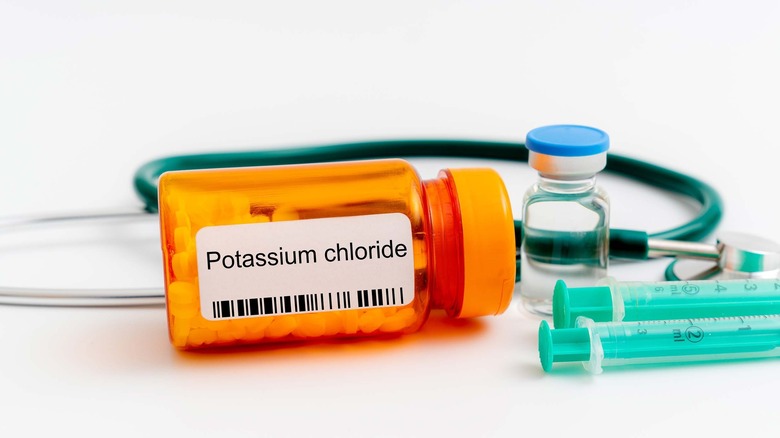What Does It Really Mean When Your Potassium Levels Are Low?
Potassium is an essential nutrient that helps with the healthy functioning of the nerves and muscles, according to MedlinePlus. It also helps to maintain a regular heartbeat and plays a key role in moving nutrients into the cells. Some potassium-rich foods include beans, bananas, lentils, and various dried fruits, per Medical News Today.
According to Harvard T.H. Chan School of Public Health, the body needs at least 400-800 milligrams of potassium daily from food. In fact, the normal blood potassium levels for an adult range between 3.5 to 5.2 millimoles per liter, explains Cleveland Clinic. Levels that fall below average might be related to hypokalemia — a condition characterized by low potassium in the body. This condition can affect vital organs like your heart and kidney and comes with mild and severe symptoms (per Medical News Today). However, hypokalemia is treatable, and it's crucial to see a doctor for effective diagnosis and treatment.
Causes and symptoms of low potassium
The most common cause of hypokalemia is excessive potassium loss through urination, says Mayo Clinic. People taking medications for blood pressure and heart disease are also at risk of developing hypokalemia. Other causes of hypokalemia include vomiting, diarrhea, excessive sweating, excessive alcohol use, and folic acid deficiency.
As stated by Healthline, various symptoms are associated with hypokalemia and the intensity depends on how severe or mild the hypokalemia is. You can expect weaknesses, fatigue, constipation, and muscle cramping when the condition is not too severe. According to the National Organization for Rare Disorders, more severe symptoms of hypokalemia include nausea, loss of appetite, and disruption of skeletal muscles, especially during exercise (since the normal physical response to exercise requires the local release of potassium from muscles). WebMD further explains that people with severely low potassium levels can also experience abnormal heart rhythms, arrhythmia, and kidney challenges leading to frequent urination and dehydration.
Diagnosis and treatment of low potassium
For a proper diagnosis, please visit your doctor. You might have to take a blood or urine test to check your potassium levels. Alternative tests include a comprehensive metabolic panel that determines your body's kidney function, according to MedlinePlus. A urinalysis can also measure the amount of potassium in your urine and help doctors determine if you're at risk of hypokalemia (via Healthline).
After diagnosis, depending on how severe the condition is, your doctor might recommend a prescription to increase your potassium level. They might also recommend you stop taking potassium-depleting medications, increase the use of daily potassium supplements, and eat potassium-rich foods like fruits and vegetables (via Medical News Today). For people with severe hypokalemia, intravenous potassium is one way to administer rapid treatment, states Mayo Clinic. This involves injecting potassium directly into the bloodstream. This treatment option works best for patients who can't absorb supplements taken orally.



